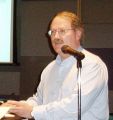VALUATION OF NATURE’S SERVICES: “Quantifying and valuing nature are complex tasks. Undertaking them alters our conception of nature. As a result of it, nature appears more fragmented,” wrote Professor John Henneberry (University of Sheffield) in a ‘think piece’ published in The Conversation (Dec 2018)

“Over the last decade, an industry has developed that values different aspects of nature in different ways,” wrote John Henneberry. “Nature appears more fragmented because we have to slice it into categories and dice those categories into bits before we can value bits of those bits. The sum of these parts is far short of the whole and does not capture the interconnectedness and holism of nature. In addition, our view of nature is biased to those aspects of it that can be measured and particularly to those that can be valued.”










